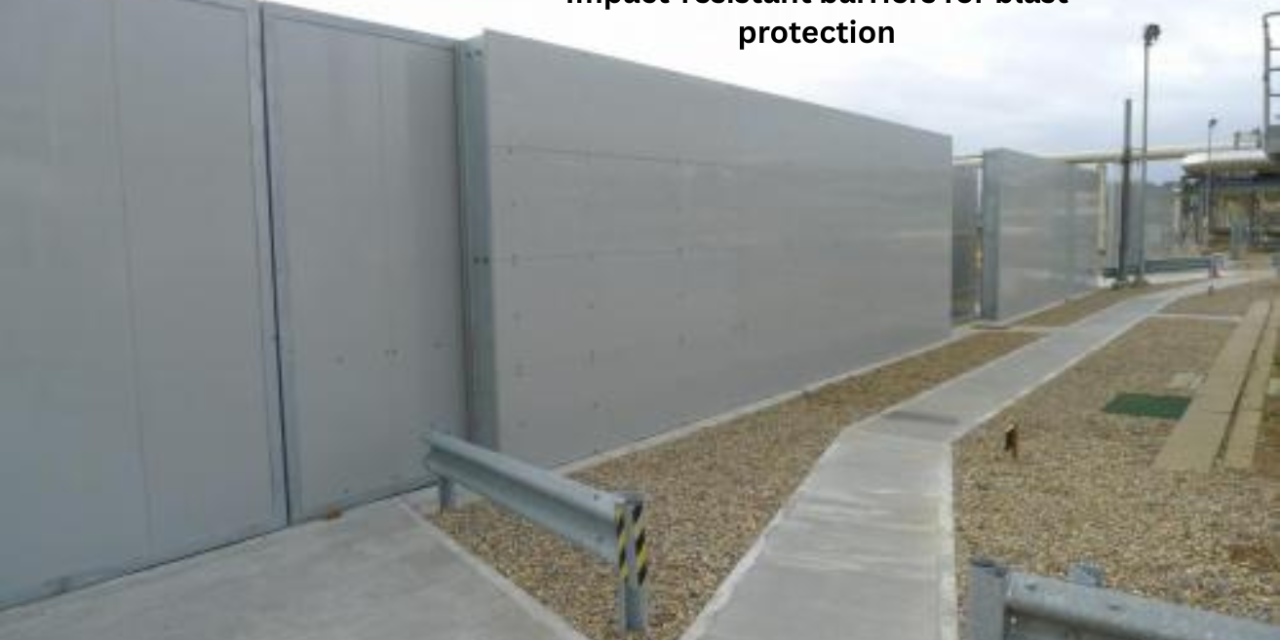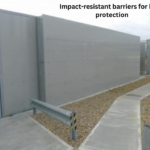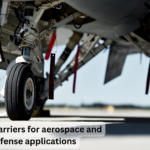Aerospace and defense facilities utilize impact-resistant barriers for blast protection to ensure the safety of personnel, equipment, and critical infrastructure against explosive threats, such as bomb blasts, shockwaves, and shrapnel. These barriers are designed to absorb and dissipate the energy generated by blasts, reducing damage and preventing catastrophic failure. Here’s how they are typically used:
1. Blast Containment and Structural Reinforcement:
- Purpose: The primary goal is to contain the effects of a blast within a specific area and prevent the shockwave, flying debris, or fires from spreading to other parts of the facility.
- Materials Used: Barriers in these applications are typically made of reinforced steel, concrete, composite materials, or sandwich panels combining multiple materials like steel and blast-resistant polymers. Some barriers may also use ballistic-resistant glass or polycarbonate to allow visibility while offering protection.
- Design Features: These barriers are often curved or angled to deflect blast energy and minimize the shockwave’s effect on the structure. They may also be double-walled to absorb energy through multiple layers of materials that can dissipate impact forces more effectively.
2. Blast-Resistant Perimeter Walls and Fencing:
- Purpose: Aerospace and defense facilities often have blast-resistant perimeter fencing and walls to secure sensitive areas, such as storage depots for explosives, ammunition, or other hazardous materials.
- Materials Used: High-strength steel mesh, reinforced concrete, and steel plates are used to build the outer walls of these facilities. These barriers are designed to absorb the energy from a potential blast while preventing the structural failure of key buildings or zones.
- Placement: Barriers are placed around high-risk areas like fuel storage, ammunition storage, and control rooms to prevent external explosions from reaching the interior of critical sections of the facility.
3. Vehicle Blast Barriers:
- Purpose: Military vehicles, aerospace hangars, and defense facilities often incorporate vehicle blast barriers to prevent the effects of car or truck bombings, particularly in areas like vehicle gates or entry points.
- Design Features: These barriers are often bollards, heavy-duty steel gates, or concrete barriers that are placed at entryways to protect the facility from vehicle-borne threats.
- Materials Used: Reinforced concrete and steel are commonly used for these barriers, as they can absorb significant force and prevent a vehicle from penetrating sensitive areas. Polymeric coatings may be applied to provide additional resistance to heat and fire caused by a blast.
4. Airblast Protection for Buildings and Shelters:
- Purpose: Buildings housing personnel, critical equipment, or command centers within aerospace or defense facilities are designed with blast-resistant barriers to protect against both direct blast pressure and airblast waves generated by explosions.
- Design Features: Blast-resistant windows, reinforced doors, and roof structures are incorporated to withstand the pressure and shock from an explosion. Flexible wall panels made from composite materials or sandwich panel systems can absorb blast energy and reduce the force transmitted through the structure.
- Materials Used: Barriers often utilize steel, concrete, and composites with blast-mitigation properties, including materials like Kevlar or fiberglass for added strength.
5. Blast Doors and Portals:
- Purpose: Special blast doors and ports are used at critical entry points in aerospace and defense facilities, especially for areas housing sensitive equipment, personnel, or weapons systems.
- Design Features: These doors are typically multi-layered with reinforced steel or titanium, often using energy-absorbing elements like foam padding or shock-absorbing layers to mitigate the impact of a blast. These barriers are often designed to remain intact even when subjected to high explosive forces.
- Materials Used: A combination of titanium, steel, and composite materials is commonly used in their construction for strength and resilience. They are often seismic-rated to prevent deformation and ensure safety during and after a blast event.
6. Seismic and Shockwave Dampening Barriers:
- Purpose: Facilities that handle explosives or aerospace equipment, such as missile testing ranges or rocket launch sites, often use barriers that can mitigate shockwaves from explosions.
- Design Features: Shockwave dampening walls are used to absorb and diffuse the shockwave, protecting sensitive equipment and preventing structural failure. These barriers may use advanced rubberized or foamed materials to absorb the initial shock.
- Materials Used: Steel is commonly used for the framework, with high-density foam or shock-absorbing polymer layers used to absorb the energy from the shockwave. Geopolymer concrete and composite materials may also be used for their ability to distribute blast forces across a broader area.
7. Aircraft and Hangar Blast Barriers:
- Purpose: Hangars and storage areas where aircraft are stored or maintained are protected by specialized blast barriers to prevent the spread of blast damage to nearby equipment or personnel.
- Design Features: These barriers are designed to prevent fragmentation from damaging other aircraft or fuel sources during an explosion. Blast-resistant curtains, reinforced walls, and partitioning systems are used to compartmentalize areas, ensuring that an explosion in one part of the hangar doesn’t propagate to others.
- Materials Used: Common materials include composite fibers, ballistic-resistant materials, reinforced steel, and Kevlar-based systems that can absorb fragmentation and blast forces while protecting equipment.
8. Interior Safety Barriers and Shielding:
- Purpose: Within aerospace and defense facilities, interior blast barriers help protect workers and equipment in the event of an accidental detonation or explosion.
- Design Features: These barriers may include partition walls, blast shields, or overhead shielding designed to contain an explosion or deflect shrapnel. Often, they are located around critical infrastructure like control rooms, command centers, and maintenance areas.
- Materials Used: Materials like fiberglass, Kevlar, polycarbonate, and steel mesh are often used to prevent fragmentation or to protect against fires caused by blasts.
Impact-resistant barriers for blast protection in aerospace and defense facilities are designed to provide robust protection against various forms of explosive threats, including direct impacts, airblast pressure, and debris fragmentation.













